Serendip is an independent site partnering with faculty at multiple colleges and universities around the world. Happy exploring!
Notes Towards Day 7 (Tuesday, 9/24): Structuring Mosaics (and Conversations)

(meeting all together in Mark's room)
I. Gallery walk--plus coursekeeping (11:25-11:40)
put your mosaics up on the wall/distribute them around the room/wander...enjoy!
keep your eyes open for related events, attending and reporting about them on Serendip:
last weekend: Bryn Mawr College Joins Effort to Promote Children's Play
7-8 p.m. this Wednesday, Paul Farber, Postdoctoral Writing Fellow @ HC, will offer a workshop,
in the Meditation Room of Woodside Cottage, on "How to Read an Image":
we will explore interdisciplinary approaches to reading photographic images,
consider the roles of aesthetics, perspective, hybrid text and image forms, archive collections,
technology, and techniques of alteration through a number of examples drawn from civil rights-era
documentary photography and contemporary digital images.
11:30 this Friday morning in the DVRm: "City Water, City Life:
Water and the Infrastructure of Ideas in Philadelphia, Boston and Chicago"--
focusing on the development of early waterworks
(think of all the sub-structures we've haven't looked @--all those sewers and drainpipes..)
also don't forget to RSVP to your Zadie Smith invitation: 7:30 Wed, Oct. 9!
also don't forget to pay Bryn Thompson (in English House) $35 for play-in-city expenses
By midnight tomorrow, post, as a "comment" to a mosaic made by one of your writing partners,
a description of its structure (you'll get a chance to practice this, taking notes while talking,
in a few minutes...)
By classtime on Thursday, read the Introduction and Chapter 5 of Mary Flanagan's book on Critical Play
(it's in our protected reading file, available from the course home page). Read the introduction carefully, and/but read Chapter 5 more selectively--focus on the intro and conclusion of the chapter, then "read around" in the middle, browsing to find an artist or artistic movement which you'd like to know more about. Do 10 minutes of research to learn more about this one phenomenon, and bring that information with you to class.
II. (11:40-12:00) History of South Street
William Penn named this street "Cedar"; it was the original southern boundary of Philadelphia (when it crosses the Schuylkill, it's interrupted by UPenn, then Woodland Cemetery, but after that it is still "Cedar" in West Philadelphia, all the way to 69th street). Until the 1950s, it was the city's thriving garment district. Edmund Bacon (a city planner who "edited the grid in many ways that were not successful"--show book!), and some others proposed that the city build a Crosstown Expressway, connecting I-76 (the Schuylkill Expressway) with I-95 (along the Delaware River) --which would have meant demolishing many of the buildings on South Street. So many of the clothing stores moved out, and the property (which was now very cheap) attracted artists and other counterculture-types. The expressway was never built, and South Street became, instead, a center for Philadelphia night life (and a tourist attraction. You were still in a very tourist-y area--albeit one that was seriously "broken" in the '60s...).
So, let's talk about our experiences of playing in (this part of) the city this weekend:
what surprised you, this time, in cf. w/ the last?
what was expected, what serendipitous?
How are Isaiah Zagar's mosaics like-and-different from those Terry Tempest Williams described?
How does he remain within the grid of tradition?
How does he depart from it?
Did you feel as though you were in the city center?
In a liminal space? with "broken things @ a seam"?
What was left out of your mosaics--and why?
What might have 'cracked' or broken them?
What stories haven't you yet told?
How might you tell them?
[how to do this? speak w/out raising hands? but looking around--
after you've spoken once--to be sure that someone else doesn't
want to speak before you speak again?]
III. (12:00-12:15) for today, we asked you each to create a mosaic representing your experience on South Street,
thinking--spatially--about weaving things together, making a whole out of fragments. We're
going to focus our writing group discussions today on how you structured your mosaics:
how did you shape them to ""make the broken whole"?
As intro to this discussion, Anne and Mark reading the structure of mosaics:
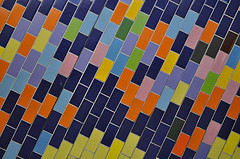
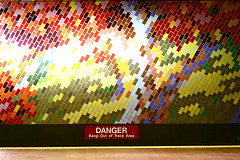
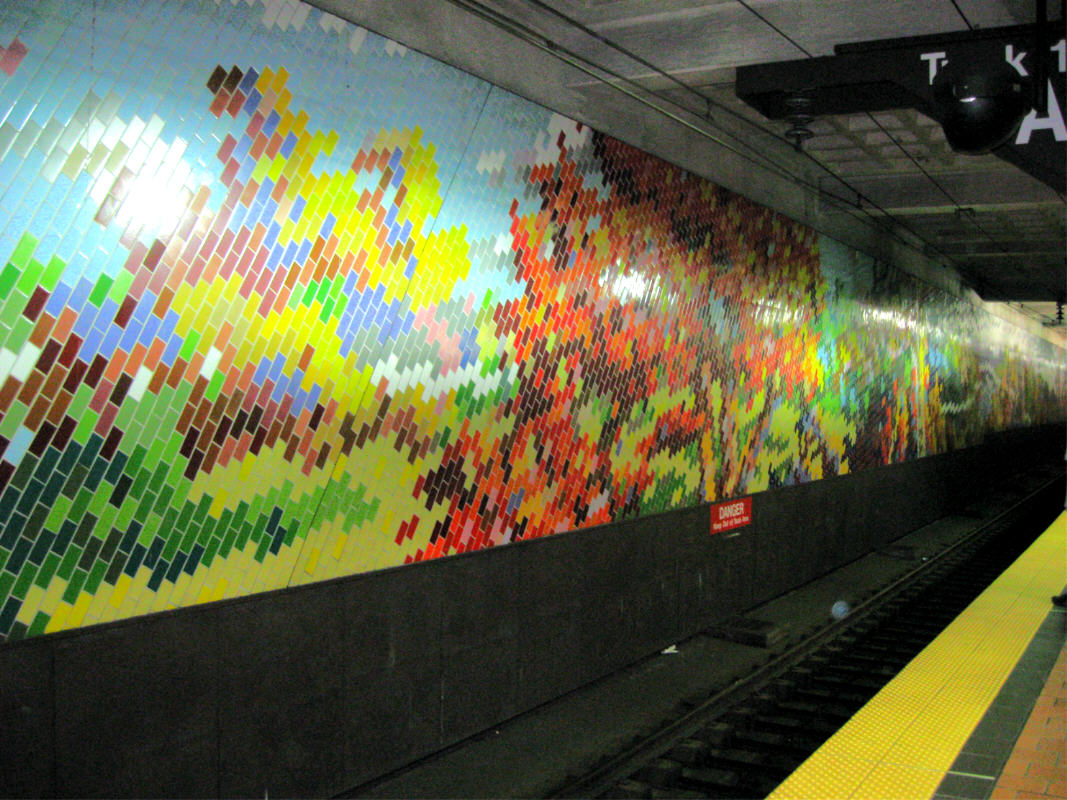
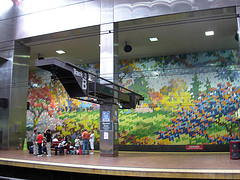
Verlin Miller, "Big Trees" (1984)
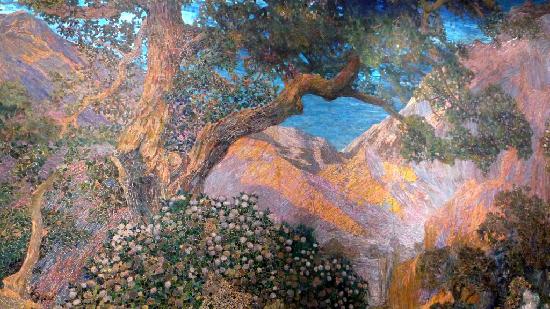
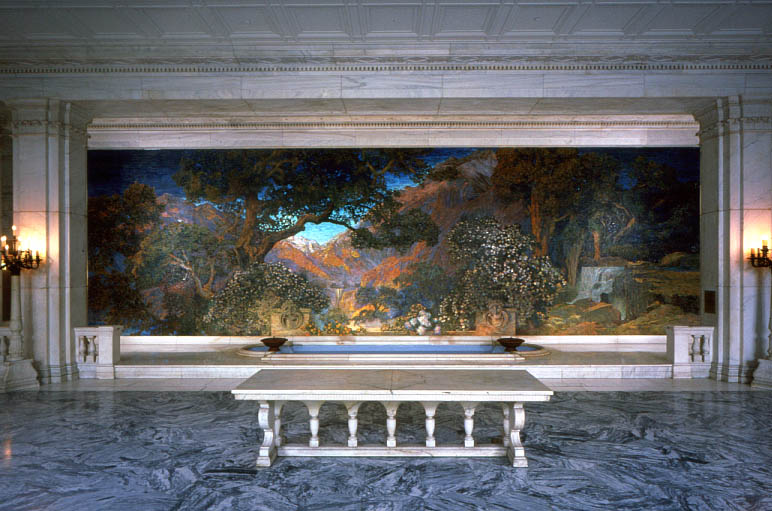
The Dream Garden, @ The Curtis Center (699 Walnut Street)
designed by Maxfield Parrish, executed by Tiffany Studios
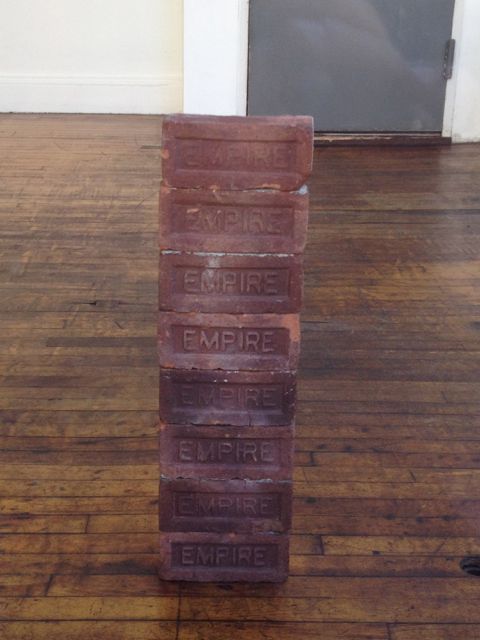
By Carl Andre (in Donald Judd's studio in NYC)
III. (12:15-12:45) get up and form yourselves into writing groups,
following two rules of combination:
--avoid those you have already been clustered w/
(either in a writing group, or on a city excursion)
--seek out those with a first language different from your own
show your mosaics to one another, and talk about the structure of each one.
Write down what you've heard-and-said; these are notes toward the
"comment" due by midnight on Wednesday, describing the structure of
one of the mosacis made by someone else in your group.


